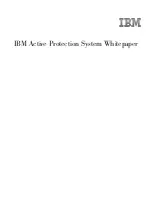
IP Multinetting
ExtremeWare XOS 11.1 Concepts Guide
375
RIP.
This section describes the behavior of the Routing Information Protocol (RIP) in an IP multinetting
environment:
●
RIP does not send any routing information update on the secondary interfaces. However, RIP will
advertise networks corresponding to secondary interfaces in its routing information packet to the
primary interface.
●
Any inbound RIP control packets from secondary interfaces are dropped.
●
Direct routes corresponding to secondary interfaces can be exported into the RIP domain (by
enabling export of direct routes), if RIP is not enabled on the container VLAN.
BGP.
There are no behavioral changes in the Border Gateway Protocol (BGP) in an IP multinetting
environment. This section describes a set of recommendations for using BGP with IP multinetting:
●
Be careful of creating a BGP neighbor session with a BGP speaker residing in secondary subnet. This
situation may lead to routing loops.
●
All secondary subnets are like stub networks, so you must configure BGP in such a way that the
BGP next hop becomes reachable using the primary subnet of a VLAN.
●
When setting the BGP next hop using an inbound or outbound policy, ensure that the next hop is
reachable from the primary interface.
●
A BGP static network's reachability can also be resolved from the secondary subnet.
●
Secondary interface addresses can be used as the source interface for a BGP neighbor.
●
Direct routes corresponding to secondary interfaces can be exported into the BGP domain (by
enabling export of direct routes).
IGMP Snooping and IGMP
Internet Group Management Protocol (IGMP) snooping and IGMP treat the VLAN as an interface.
Only control packets with a source address belonging to the IP networks configured on that interface
are accepted. IGMP accepts membership information that originates from hosts in both the primary and
secondary subnets. The following describes the changes in behavior of IGMP in an IP multinetting
environment:
●
A layer 3 VLAN will always use the primary IP address as the source address to send out an IGMP
query, and querier election is based on the primary IP address of interface. Because the RFC dictates
that there is only one querier per physical segment, the querier may be attached to any of configured
IP interfaces, including secondary interfaces, although this is not a recommended configuration.
●
For a static IGMP group, the membership report is also sent out using the primary IP address.
●
For local multicast groups such as 224.0.0.X, the membership report is sent out using the first IP
address configured on the interface, which is the primary IP address in ExtremeWare XOS.
●
The source IP address check is disabled for any IGMP control packets (such as IGMP query and
IGMP membership report). Source IP address checking for IGMP control packet id disabled for
all
VLANs, not just the multinetted VLANs.
Содержание ExtremeWare XOS 11.1
Страница 16: ...Contents ExtremeWare XOS 11 1 Concepts Guide 16...
Страница 20: ...Preface ExtremeWare XOS 11 1 Concepts Guide 20...
Страница 21: ...1 Using ExtremeWare XOS...
Страница 22: ......
Страница 78: ...Managing the ExtremeWare XOS Software ExtremeWare XOS 11 1 Concepts Guide 78...
Страница 168: ...Virtual LANs ExtremeWare XOS 11 1 Concepts Guide 168...
Страница 200: ...Policies and ACLs ExtremeWare XOS 11 1 Concepts Guide 200...
Страница 252: ...Security ExtremeWare XOS 11 1 Concepts Guide 252...
Страница 265: ...2 Using Switching and Routing Protocols...
Страница 266: ......
Страница 294: ...Ethernet Automatic Protection Switching ExtremeWare XOS 11 1 Concepts Guide 294...
Страница 354: ...Extreme Standby Router Protocol ExtremeWare XOS 11 1 Concepts Guide 354...
Страница 416: ...IP Multicast Routing ExtremeWare XOS 11 1 Concepts Guide 416...
Страница 417: ...3 Appendixes...
Страница 418: ......
Страница 432: ...Software Upgrade and Boot Options ExtremeWare XOS 11 1 Concepts Guide 432...
















































